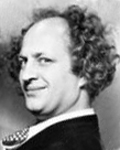ozij wrote:Here's how I understand the system:dsm wrote:It works as I always understood it did but the point I was making is that that mode of working raises in my mind issues as to the value of shifting the whole SV pressure range up and down with epap.
Epap is addressing OSA events by stenting the airway. To hang both bilevel pressure variance and SV pressure variance off a fluctuating epap just looks like it will create problems for anyone who gets used to particular pressure ranges.
It is called BIPAP because it is capable of supplying 2 kinds of pressure, one for inhale (IPAP) one for exhale (EPAP).
It varies EPAP automatically based on the improved auto algorithm (used in the PR1) and its aim is to keep the airway patent -- avoid obstructions (As though a person were using an APAP).
The machine also varies IPAP -- however it uses only the SV algorith to do that, not the Auto algorithm.
No matter what the EPAP a person needs, SV will be taking care of the inhale pressure. There can be a minimal SV response, and it has a range up to a maximal SV response. There is no "non-SV" IPAP variablilty. All inhale pressure changes are a result of the SV algorithm.
http://bipapautosvadvanced.respironics.com/If you look at the Prescripton Conversion Guide you'll find that the new machine doesn't even seem to have an IPAP definition at all. Everything is defined in PS terminology - how inhale pressure is supported after obsturctions have been solved by the auto.A smart blend of advanced technologies
BiPAP autoSV Advanced has at its core the clinically-proven 1, 2 REMstar Auto algorithm. Utilizing a blend of advanced Respironics technologies (Digital Auto-Trak and REMstar Auto titration algorithm plus auto EPAP) the device is uniquely able to continually and effectively manage the patient's airway. Our proven servo ventilation algorithm then works to assure that with each and every breath, the patient is appropriately ventilated.
Ozij,
Am not really sure what your point is - You are agreeing that the whole SV box & dice 'floats' with the 'floating' epap (aren't you ?).
I was saying that if someone sets EpapMin to say 4 CMs and EpapMax to say 10 CMs and also has PSMin=3 (which adds 3 CMs on top of the active Epap to deliver Ipap (initially at 7 Cms) and has SV activated say PSMax=12) which adds further potential SV pressure on to Ipap (t max 16 CMs) which is a range of 9 CMs to respond to SV events, BUT SAY THIS PERSON NORMALLY NEEDS Epap=10 because of their OSA, then this scenario will be a recipe for trouble just as setting a CpapAuto to min=4 max=20. At least in a CpapAuto there is only the one pressure. But with a Bipap Auto SV advanced there are now 3 fluctuating pressure ranges & 2 of them (the bilevel component & the SV component) float (tied by PSMin) with the third one which is epap.
We have been through the mess with CpapAuto that 4-20 'open' settings created. Now we are seeing that same mess emerging when someone naivly believes that setting their Bipap Auto SV Adv to EpapMin=4 or 5 or therabouts, will solve all their problems because the 'auto' will adjust as needed.
I now fear that the settings on this machine are so variable and so complex that no one really understands them, or the repercussions anymore. I postulate that this thread is a reasonable proof of this.
It is a worry.
Cheers
DSM















